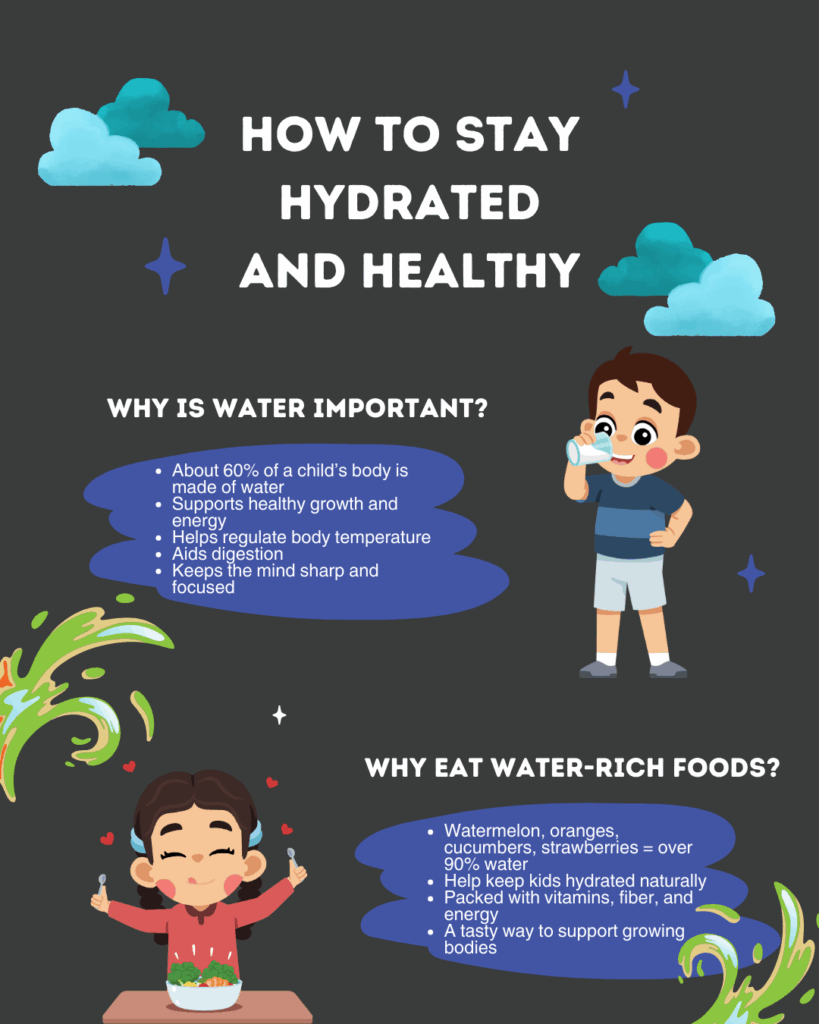3 Refreshing Tips on Hydration and How To Navigate in Arizona’s Heat and Children’s Health
Arizona’s intense heat presents unique challenges, especially when it comes to keeping children properly hydrated. Understanding how the scorching temperatures affect young bodies is essential for maintaining their health and well-being. Firstly, children’s bodies lose water more rapidly than adults due to their higher surface area-to-body mass ratio, making them more susceptible to dehydration. Secondly, the dry desert air accelerates moisture loss through perspiration and breathing, often without obvious signs like sweating. Thirdly, children may not always recognize or communicate their thirst effectively, increasing the risk of inadequate fluid intake. Additionally, physical activity in such heat further compounds fluid loss, requiring proactive hydration strategies. By recognizing these factors step by step, caregivers can better anticipate children’s hydration needs, ensuring they receive adequate fluids before, during, and after outdoor activities. This foundational understanding is crucial in navigating Arizona’s heat safely and promoting children’s health throughout the hottest months.
Effective Strategies for Maintaining Proper Hydration in Children During High Temperatures
Maintaining proper hydration in children during Arizona’s high temperatures requires practical and consistent strategies. Here are some effective tips to keep your child well-hydrated and healthy in the heat:
- Encourage frequent water breaks: Offer water to children regularly, even if they don’t ask for it, especially during outdoor play or physical activity.
- Make water appealing: Use colorful bottles or cups, add slices of fresh fruit like lemon or cucumber, or offer chilled water to make hydration more enticing.
- Incorporate hydrating foods: Include water-rich fruits and vegetables in meals and snacks, such as watermelon, oranges, cucumbers, and strawberries.
- Avoid sugary or caffeinated drinks: These can lead to dehydration rather than prevent it, so stick to water or natural fruit juices in moderation.
- Set a hydration routine: Establish set times for drinking fluids throughout the day to instill good habits.
- Dress appropriately: Light, breathable clothing helps reduce sweating and fluid loss.
- Monitor urine color: Pale yellow urine generally indicates good hydration, while darker shades suggest the need for more fluids.
By implementing these strategies, caregivers can proactively support children’s hydration needs, helping them stay comfortable and safe in the sweltering Arizona heat.

Recognizing Early Signs of Dehydration and Preventive Measures
Recognizing the early signs of dehydration in children can be tricky, and several common mistakes often hinder timely intervention. One frequent error is relying solely on thirst as an indicator; children might not feel or express thirst clearly, leading caregivers to underestimate their hydration needs. Another mistake is overlooking subtle symptoms such as irritability, fatigue, or decreased urine output, which can precede more obvious signs. Parents and guardians sometimes assume that if a child is active and playful, dehydration is unlikely, yet children can still be dehydrated despite outward appearances. Additionally, caregivers may delay offering fluids during outdoor play, fearing it will interrupt fun, which inadvertently increases risk. In terms of prevention, a common misstep is providing sugary or caffeinated drinks that may exacerbate dehydration rather than alleviate it. Lastly, not adjusting fluid intake according to the severity of heat or the child’s activity level can leave children vulnerable. To avoid these pitfalls, it’s crucial to monitor hydration proactively and recognize early warning signs. Here are key points to remember:
- Don’t wait for thirst; offer regular fluids.
- Watch for subtle symptoms like irritability or dry mouth.
- Encourage fluid intake before, during, and after physical activity.
- Avoid sugary or caffeinated beverages.
- Adjust hydration strategies based on temperature and exertion levels.
The Role of Nutrition and Environment in Supporting Hydration for Children in Arizona
Nutrition and environment play pivotal roles in supporting hydration for children living in Arizona’s arid climate. A diet rich in water-dense fruits and vegetables—such as watermelon, cucumbers, and oranges—can significantly contribute to fluid intake, complementing regular water consumption. Additionally, foods high in electrolytes, like bananas and leafy greens, help maintain the body’s balance of essential minerals lost through sweat. Environmental factors, including the dry desert air and intense sun exposure, increase the rate at which children lose fluids, making it crucial to create shaded, cool spaces where they can rest and rehydrate effectively. Encouraging children to drink fluids regularly, even when they do not feel thirsty, is vital due to their often-limited ability to recognize dehydration symptoms. Incorporating these nutritional strategies alongside environmental adjustments ensures a comprehensive approach to hydration. Caregivers should consider not only the quantity of fluids but also the quality of nutrition and the surrounding environment to safeguard children’s health against dehydration in Arizona’s heat. This integrated approach fosters resilience and well-being during the demanding summer months.
Encouraging consistent hydration habits in children is essential, especially in Arizona’s challenging heat. Parents and caregivers can foster these habits by making hydration a fun and regular part of the daily routine. Offering water at set times—such as before meals, after outdoor play, or during quiet moments—helps children internalize the importance of drinking fluids frequently. Using colorful water bottles or incorporating playful reminders can transform hydration into an enjoyable activity rather than a chore. Additionally, involving children in choosing their favorite flavors or adding natural fruit slices to water can increase their enthusiasm for drinking. It’s important to lead by example; when adults prioritize their own hydration, children are more likely to follow suit. Remember, small, consistent steps build lasting habits that protect children from dehydration and heat-related illnesses. So, let’s commit to making hydration a joyful and regular part of every child’s day—your encouragement truly makes a difference in keeping them healthy and happy under the Arizona sun!

